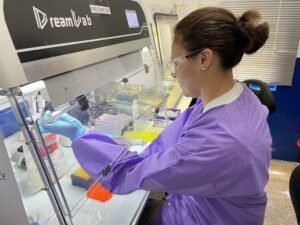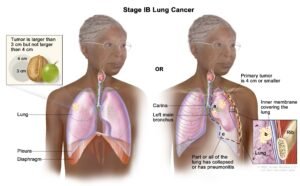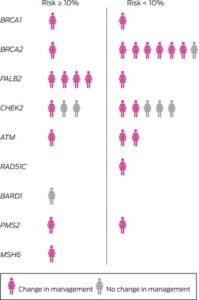Pilonidal Cyst Symptoms and Treatment
Understanding Pilonidal Cysts
A pilonidal cyst is a fluid-filled sac that typically forms near the tailbone, at the top of the buttocks. Often linked to an infected hair follicle, this condition can cause discomfort and other symptoms. While the exact causes remain unclear, certain factors increase the likelihood of developing a pilonidal cyst, particularly in men. Risk factors include obesity, prolonged sitting, and poor hygiene in the affected area.
Symptoms of Pilonidal Cysts
Pilonidal cysts may not always present noticeable symptoms and might only be detected during a medical examination. However, when symptoms do occur, they can vary depending on whether the condition is acute or chronic.
Common Symptoms
-
A tender lump at the base of the spine or top of the buttocks
-
Warmth in the affected area
-
Fluid leakage or discharge from the cyst
-
Skin changes, such as redness, darkening, or swelling
Acute vs. Chronic Symptoms
-
Acute Episode: An abscess may form in the natal cleft (the area where the buttocks separate), causing sudden pain and swelling that typically resolves quickly.
-
Chronic Condition: Known as pilonidal sinus disease, this form involves recurring episodes that can persist for years, with intermittent fluid leakage and potential infections.
Causes and Risk Factors
The development of a pilonidal cyst often begins with a hair penetrating the skin, which becomes embedded due to friction or pressure. Hormonal changes may enlarge hair follicles, leading to blocked glands and cyst formation around the hair.
Key Risk Factors
-
Gender: More common in men
-
Age: Frequently occurs in individuals under 40, especially teenagers
-
Body Weight: Obesity increases susceptibility
-
Hair Density: Excessive hair in the area
-
Anatomy: A deep natal cleft
-
Lifestyle: Extended periods of sitting, such as during work
-
Hygiene: Poor cleanliness in the area can contribute
Note on Terminology: Sex refers to biological attributes (chromosomes, hormones, anatomy), while gender reflects a person’s identity and societal roles. This guide uses terms like “male” and “female” as they appear in research, acknowledging that not all individuals fit binary categories.
Diagnosing a Pilonidal Cyst
Diagnosis typically involves a physical examination of the natal cleft to identify the cyst. Key indicators include redness, swelling, and pain. Imaging tests, such as endoscopy or MRI, are rarely needed but may be used to rule out other conditions if the cyst appears atypical or is located in an unusual area.
Treatment Options
Treatment for a pilonidal cyst focuses on relieving symptoms and preventing complications. The approach depends on the cyst’s severity and whether it recurs.
Initial Treatments
-
Drainage: A healthcare provider may drain the cyst in an outpatient setting using local anesthesia. An incision is made to remove fluid, providing immediate relief.
-
Antibiotics: Oral or topical antibiotics may be prescribed to prevent or treat infections.
-
Wound Care: Dressings are applied, requiring regular changes and follow-up to monitor healing.
Surgical Interventions
For recurring cysts or complications, surgery may be necessary:
-
Endoscopic Surgery: A minimally invasive option that reduces recovery time.
-
Traditional Surgery: More extensive cases may require general anesthesia and hospitalization.
Emerging Treatments
-
Laser Therapy: Outpatient laser treatment shows promise but has a higher recurrence rate compared to surgical excision.
-
Light-Based Hair Removal: Intense pulsed light therapy can reduce hair in the area, serving as a primary or complementary treatment.
-
Injections: Phenol or fibrin injections promote healing and reduce infection in pilonidal sinuses.
Important: Pilonidal cysts do not resolve on their own. While over-the-counter pain relief can manage symptoms temporarily, professional treatment is essential to prevent infection or recurrence.
Prognosis and Complications
Pilonidal cysts are generally benign, but untreated cases can lead to serious complications, such as abscesses or, in rare cases, squamous cell carcinoma after years of neglect. Recurrence rates range from 10–20% for drainage procedures and up to 11% for surgical treatments. The condition is less common in individuals over 40, often becoming less problematic with age.
Risks of Untreated Cysts
-
Persistent infections
-
Formation of multiple cysts
-
Development of fistulas (abnormal connections between body sites)
-
Rare risk of cancerous transformation
Conclusion
Pilonidal cysts, often caused by ingrown hairs, are fluid-filled sacs near the tailbone that can cause pain and swelling. They are more prevalent in young men and individuals with risk factors like obesity or prolonged sitting. Early diagnosis and treatment—ranging from drainage to surgery—are critical to managing symptoms and preventing complications. Regular follow-up care ensures proper healing and reduces the likelihood of recurrence.
💡 Frequently Asked Questions
⭐ Expert Tips
- Include seasonal or trendy variations to keep your meals exciting.
- Highlight prep shortcuts or time-saving techniques for busy cooks.
- Consider dietary restrictions and include substitution suggestions.
✅ Key Takeaways
- These dinner ideas are perfect for impressing guests or enjoying special occasions.
- Choose recipes that match your skill level and available kitchen tools.
- Presentation and taste both contribute to a memorable dining experience.
📣 Join Our Community
Want more inspiration like this? Subscribe to our newsletter for weekly dinner ideas and cooking tips!






